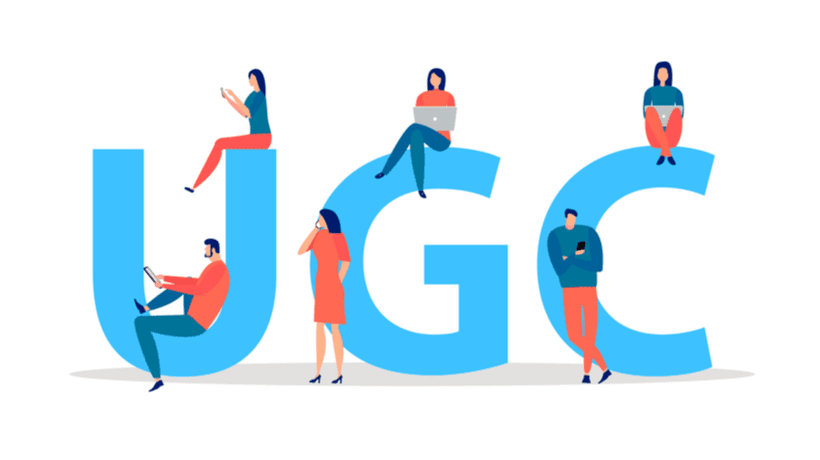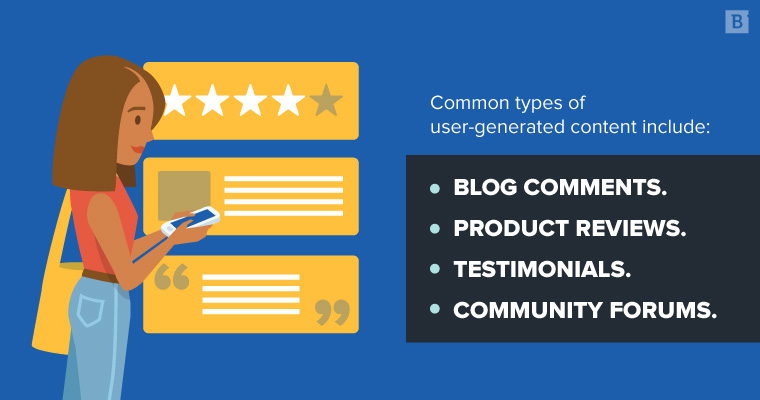Brafton’s Monthly Newsletter from the Social Team
In this month’s edition, we’re focusing on the importance of user-generated content — UGC for short!

In this month’s edition, you’ll find:
- Why UGC is important for your social presence…
- A few great examples of UGC and how it can be used…
- And a few ways you can encourage your followers to create content for you!
#DYK
Let’s start with the basics.
User-generated content (also known as UGC or consumer-generated content) is original, brand-specific content created by customers and published on social media or other channels. UGC comes in many forms — including images, videos, reviews, a testimonial, or even a podcast!

Here’s a great example of organic UGC that was we repurposed for Hatfield Meats, a Brafton Client, on Instagram:
So, where does UGC come from?
UGC can be garnered from customers, brand loyalists, employees, or a UGC creator. A UGC creator is someone who creates sponsored content that appears authentic, but is designed to showcase a specific business or product. UGC creators are not creating traditional organic UGC — they’re paid by brands to create content that emulates traditional UGC.
And here’s a great example of UGC Creator content that we repurposed for Hatfield Meats on Instagram:
Why is UGC important?
UGC is used across all stages of the buyer’s journey to help influence engagement and increase conversions. The customer-centric content can be used on social media and other channels, such as email, landing pages, or checkout pages.
UGC can:
✔️Increase your brand’s authenticity.
✔️Establish brand loyalty.
✔️Ensure trust in your product or service.
✔️Increase conversions, purchases or leads.
And much more, given that UGC is adaptable, flexible and more cost effective than influencer marketing (which can run into the millions).
#OMG
Did you know that consumers are 2.4 times more likely to view UGC as authentic compared to content created by brands?
92% of consumers turn to people they know for referrals and any other source — that’s a big number, and correlates with the 84% of consumers who say they trust recommendations made by their friends, family, and other circles more than any other sources of advertisers.
The problem though, for most brands, is convincing users that the UGC they are seeing is authentic. 51% of consumers believe that less than half of brands create content that resonates as authentic.
Let’s take a look at a few more great instances of UGC to really drive the point home.
#SPOTLIGHT
@lazyoaf on Instagram:
This UGC by Lazy Oaf is a great example of what to do when a consumer or creator tags you in UGC — tag them in the caption and the image. Give credit to the user or creator who created the content — not only do you instill trust in your consumer base, but you can also leverage this tactic to increase awareness, and maybe even followers.
@turbocoffee on Instagram
In this instance, a user took a photo and added a few graphic and text elements — inspired by the coffeeshop itself.
#UGCTips!
In closing: Ask your followers for content! They want you to use it. Here are a few helpful tips to keep in mind:
✔️Set goals! Set benchmarks for growth.
✔️Be clear and honest about the type (and quality) of UGC content you’re looking for!
✔️Request permission! This will further instill trust into your brand.
✔️Credit the original creator!
#ICYMI
Catch up on the these Brafton articles:
- Your Guide to Social Media Impression Definitions + 7 Essential Marketing Metrics (With Infographics)
- Social Advertising Benchmarks for 2023
- How to Create an Instagram Content Calendar for Your Business (+ Downloadable Template) [Infographic]
- 4 Types of User-Generated Content Marketing—with Examples
#BFF
Let’s make it official! Follow Brafton on social:





